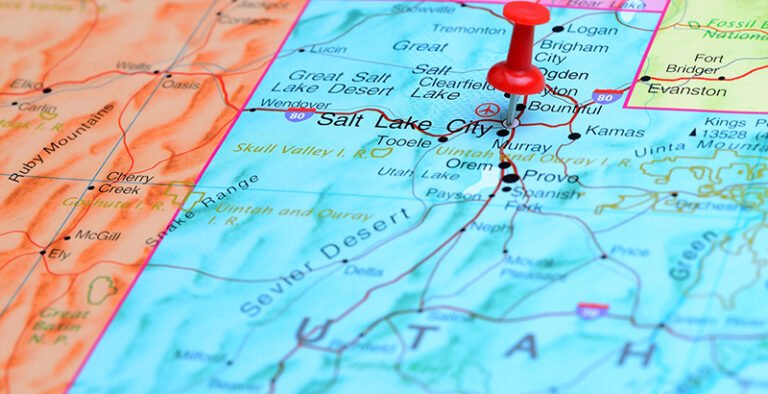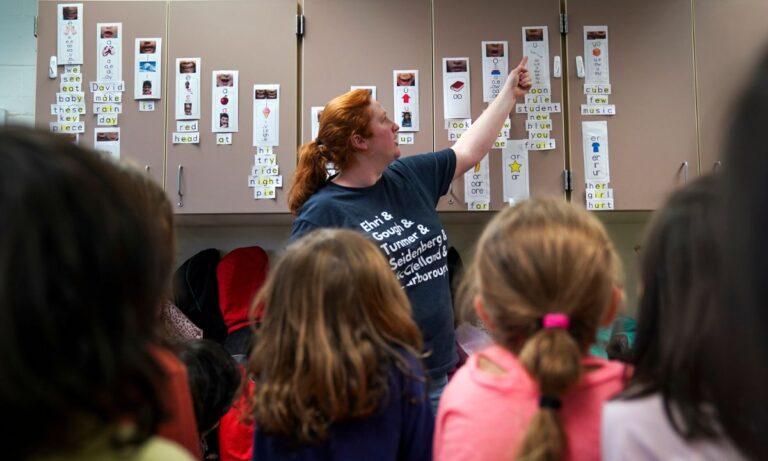$200 Rent, District Supe as Landlord: Affordable Teacher Housing Is on the Rise
As housing prices spike, more districts are building teacher homes to attract young, lower-paid school staffers and help keep those they already have.
When Nathan Phipps interviewed for a teaching job four years ago in Byers, Colorado, he didn’t know that his future superintendent would also be his landlord.
A recent college graduate from Kansas, Phipps chose the district, which is about 45 miles east of Denver, because of an unusual job perk: housing for school staff. The district-owned apartments offer monthly rent starting at $200. Phipps, who still lives in the apartments with his wife and infant son, said it’s a main reason he’s remained in the district.
Affordable educator housing has existed for decades, especially in remote school districts like Byers. But teachers are increasingly getting priced out of the communities they work in — causing them to seek employment elsewhere or avoid jobs in high-priced metro areas. To combat this issue, nonprofits and school districts across the nation — in states including Colorado, Arkansas, California, New Mexico and Kansas — are pursuing teacher housing projects to improve educator retention.
For example, rent for a one-bedroom apartment at a new complex for San Francisco Unified staff starts at $1,183 per month, in a district where pay for new teachers this year is $79,468 and similar rentals go for around $3,000 or more. First-year Kansas City educators who make a $48,150 salary can pay $600 to $900 a month to share a duplex with other teachers. Nearby monthly rents start at $1,000. San Francisco tenants are selected through a lottery system, but many other housing projects prioritize new teachers and have waiting lists.
Between 2019 and 2025, housing costs increased by roughly 50% on average, outpacing the average 24% growth in entry-level teacher salaries, according to a National Council on Teacher Quality report.
“Until all teachers can reliably afford basic necessities like housing, the challenges of attracting and retaining a diverse, high-quality teacher workforce will likely persist,” the report said.
‘I don’t have much turnover’
Phipps interviewed with multiple Colorado districts, including one that paid more than what Byers was offering. But he liked the high school social studies job in Byers the most because of the school community and low-cost housing. Rental units are scarce in the district, with monthly payments starting around $1,400 — a high price tag for Phipps’ $50,738 salary. Having a boss who was also his landlord wasn’t an issue, he said.
“The demand and prices of housing — especially rent — is very high out here,” he said. “I don’t know if I would have moved out to Colorado without this teacher housing. I didn’t know what was going to be do-able with my teacher salary straight out of college.”
The Byers school district has owned staff housing since the 1960s. It has 10 apartments and two houses — all occupied, with a waiting list. Superintendent Tom Trudell said the rent pays for occasional renovations or repairs. Housing has always been part of the district’s strategy to attract and retain teachers, he said, and it allows them to save money to eventually buy a house of their own.

“There’s a kind of a bond that builds between [me and my tenants], because if they’re quality employees, they’re typically not going anywhere,” he said. “So I don’t have much turnover.”
In the Vilas School District in southeastern Colorado, Superintendent Abby Pettinger is the landlord for 11 rental homes that house eight single school staff members and one family with children. Two units are vacant. The homes have become outdated because the district lacks money for repairs and remodels.
“It’s really hard to be somebody’s landlord and be their boss,” she said. “We wanted [the units] to be an asset for our staff, but I wish that we could be at a point that it could be self-sustaining. We’re not at that point.”
Some teacher housing complexes are owned and managed by local nonprofits rather than the school district. That’s the case for Harrison School District 2 in Colorado Springs. An organization called We Fortify is raising $6 million for two teacher villages that consist of 325-square-foot tiny homes. Rent will start at $825 per month.
Construction has already begun, and teachers will begin to move in next summer, said district spokesperson Christine O’Brien.
“We did poll all of our staff before we … started designing the idea for the village,” she said. “We could have filled five villages with just our initial interest.”
District plans don’t always come through
Of the 12 teacher housing developments in California, seven have popped up in just the last three years, according to a study from the Center for Cities and School at the University of California-Berkeley.
“Generally, recruitment has become more and more challenging, so districts are motivated to look for other ways to enhance their ability to recruit staff,” said Sara Hinkley, the center’s program manager. “High costs of housing have become pretty entrenched. And then most states are experiencing declining enrollment, which means there are more properties available.”
The Santa Clara Unified School District was the first in the state to complete a teacher housing project, in 2002. This year, three developments for multiple school districts opened in Silicon Valley, in San Francisco, Mountain View and Palo Alto. Educators in Mountain View and Palo Alto were offered free rent as an incentive to move in.
Building affordable teacher housing can be a rocky process, especially if schools or nonprofits run into problems with city zoning laws, insufficient funding or a lack of community support. It took 10 years to build modern, five-story apartment buildings for San Francisco Unified teachers because of housing density concerns and other issues. And once the lottery opened, some teacher applications were rejected.
In 2021, California’s Oakland Unified School District earmarked two sites for future teacher housing. The apartments have yet to be built. The project hasn’t received enough funding, and union members have asked the district to focus first on raising wages.
“We’ve definitely seen districts realize that what they want to do isn’t going to be financially feasible,” Hinkley said. “They may get as far as choosing a parcel of land, coming up with an idea of what they want to build and [find out] that they are going to have to charge rent that’s way too high in order to make the project work.”
Rural schools in New Mexico have access to state-funded teacher housing, but larger districts like Sante Fe Public Schools don’t qualify. In recent years, the district secured more than $1.5 million in funding for a 40-unit housing complex project, but that was well below the needed $15 million. Now, Santa Fe is trying to fund it through a proposed $150 million bond issue.
An initiative in Bentonville, Arkansas, stalled last year when the city council rejected a rezoning request to turn school district property into 40 cottages for low-income staff. The Bentonville School District had donated nine acres next to its high school to the Excellerate Foundation, a local nonprofit that was funding the $35 million housing project.

Superintendent Debbie Jones said she thought it was the end of a project she had worked on since 2021, when Bentonville began to lose newly hired educators who couldn’t afford to live in the district. But then the foundation included the teacher housing plans in a nearby development project that’s slated to open in 2026. Two-bedroom cottages will cost $1,000 a month.
“It’s actually better than our original plan because they have built in a 3,000-square-foot child care center that we will run and it serves the families in that neighborhood,” she said.
Giving new teachers a boost with education and a home
The housing projects for the Bentonville and Harrison school districts have guidelines to allow low-income young staffers like new teachers or paraprofessionals to qualify. Residents also have a time limit for staying in the housing. For Bentonville, educators have to move out after five years. In the Harrison district, the maximum is three years.
In both, residents are required to participate in financial management classes that are designed to help them prepare to move out. In Bentonville, staffers can pay an extra $500 a month in rent as part of a program that will give tenants $50,000 toward their next house.
Kelly Davis, president of the Bentonville Education Association, said young teachers in the district are getting excited for the development to open because monthly rent costs anywhere from $2,000 to $5,000.
“When I came to the district back in 2003, I couldn’t afford to live here. I still don’t live in Bentonville,” he said. “They are trying very hard to make sure that the lowest-paid people in the district have a place to live, so that they don’t have to leave the community.”
Kansas City has a similar housing project that not only provides financial education, but helps college graduates get their first teaching job.
In 2020, Trinity Davis left her post as assistant superintendent of Kansas City Public Schools and founded Teachers Like Me to increase the number of local Black educators. A 2021 study by the University of Missouri-Kansas City reported the metro area had more than 53,000 Black students but fewer than 1,200 Black teachers.
Teachers Like Me recruits recent college graduates by securing them a job in one of eight partner Kansas City school districts while also providing low-cost housing. School districts pay the organization $15,000 for every educator they receive through the process. The nonprofit has three homes and is in the process of building seven more to create a duplex neighborhood.
“Suburban districts that don’t have any teachers of color are coming to us to say, ‘Hey, can you help us recruit some Black teachers?’” Davis said. “I have an elementary school where the fourth-grade, fifth-grade and sixth-grade teachers are all Teachers Like Me [participants]. They’re like a family and they live together.”








